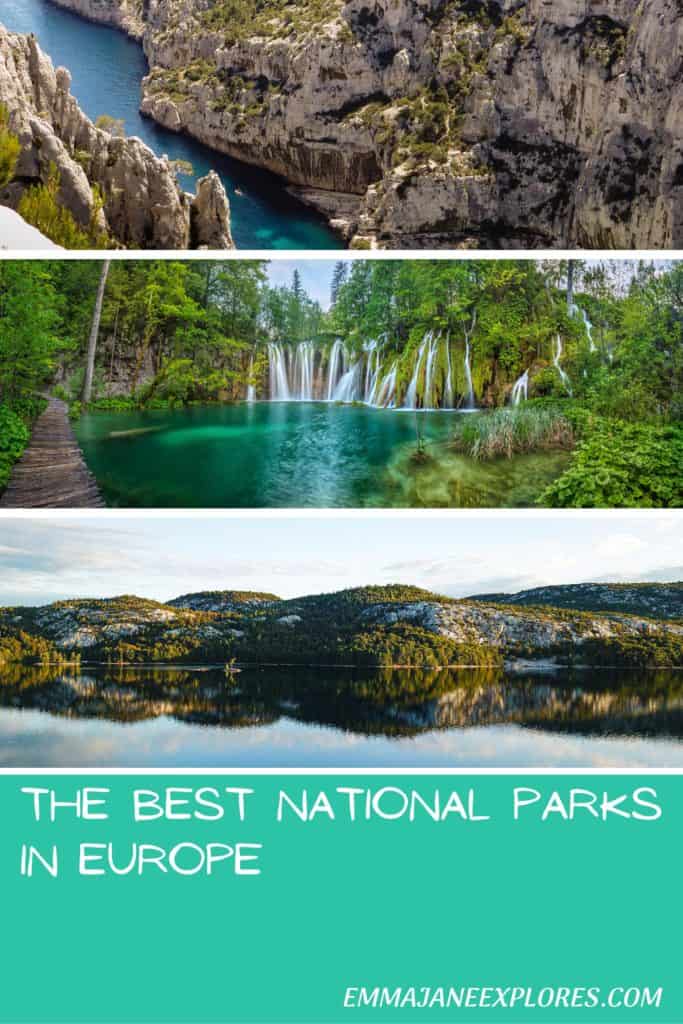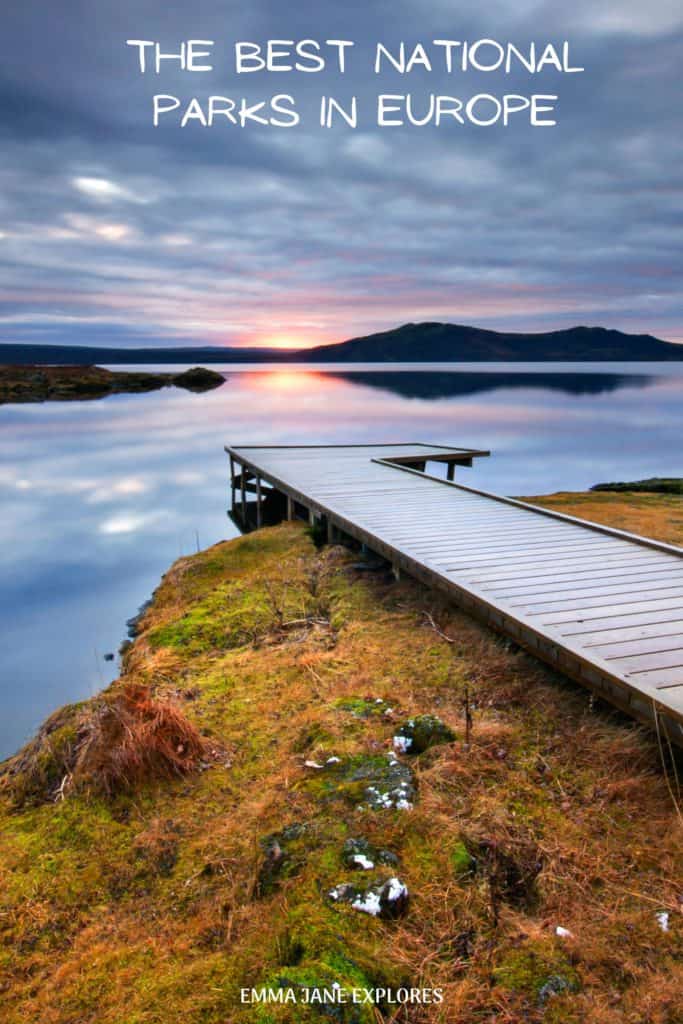The Best National Parks to Visit in Europe

Compiling a list of the best National Parks in Europe is giving me serious wanderlust. I can’t wait until I can make the long trip over to the continent again. For now, though, I’ll have to be content trawling through the amazing contributions from this exceptional bunch of travel bloggers who share their favourite outdoors experiences in the most beautiful and best National Parks in Europe.
Check out my other posts on the best National Parks in the world:
Ballons des Vosges, France
The Regional Nature Park of the Ballons des Vosges is located in North-East France.
The Park covers 2700 square kilometres and incorporates pieces of the regions of Alsace, Franche-Comté and Lorraine. This makes it one of the biggest Nature Parks in France. The best way to access the park is via a trip from Strasbourg or any of the amazing villages of the Alsace France.
The park offers some beautiful natural and cultural heritage of the area. The region is especially beautiful in Autumn when the leaves turn an amazing shade of colour before falling off just prior to winter. The natural landscape is hilly and mountainous with dense forests, mountain lakes and high plateaus for skiing in the winter. Wildlife is abundant in the area and you can see Falcons, deers, lynx and Grey Wolves who have returned to the park in the last decade.
The Park also incorporates some of the famous Alsace fairytale villages such as Keysersberg, Ribeauville, Eguisheim and more. These towns are all part of the highly popular and well-publicized Alsace Wine Route. History lovers will find memorials and battle sites where the French fought hard to keep the invading Nazis at bay during WW2. Located just outside the boundary of the park is Struthof Concentration Camp. It is the only camp that was built and operating in France by the Germans.
The park has many scenic walking trails that can take from a few hours to a few days to complete. In the Winter Months cross country, skiing and family fun with toboggans etc can be had in the high reaches of the Vosges park. If you’re in the region and have a car you should undoubtedly take a drive in this fantastic area of France and one of the best National Parks in Europe.
Contributed by Mark from Wyld Family Travel

Brecon Beacons National Park, Wales
The Brecon Beacons National Park in Wales is a stunning landscape made up of mountains, valleys and moorland. It is a place to escape to for a taste of the great outdoors and offers the visitor stunning walks, cascading waterfalls, mountain hikes and traditional Welsh villages to explore.
From England it is a 4/5-hour car journey and the perfect escape for a 3-night stay. Of course, if you live in Wales you have all the amenities of the Brecon Beacons right on your doorstep.
For history lovers there are plenty of castles to visit from the gothic revival design of Castell Coch to the 12th century ruins of Carreg Cennen castle. And for walking and hiking enthusiasts there is the chance to climb to the summit of Pen Y Fan, South Wales highest mountain.
Or maybe you are interested in an animal encounter, if so, there are several Red Kite feeding stations where you can watch these magnificent birds in full flight – a treat for avid photographers.
Whatever you are looking for you are sure to find it in the 519 sq. miles of lush Welsh countryside that awaits your arrival in the Brecon Beacons, one of Europe’s best national parks.
Contributed by Angela from Where Angie Wanders

Cairngorms National Park, Scotland
Cairngorms is the largest National Park in United Kingdom and one of the two parks in Scotland, alongside Loch Lomond & Trossachs National Park. Covering over 4500 sq kms of land, Cairngorms is a perfect location to spend time, whether it is on a weekend or for a week long, there is so much to see and do here all through the year making it one of the best National Parks in Europe.
In summer, the park is known for activities like hiking, walking, cycling, canoeing. Winter is equally entertaining, as three of Scotland’s five ski resorts are concentrated around Cairngorms mountains. For hikers and mountain climbers Cairngorms has not one or two, but 55 Munros to climb (Scottish Mountains that are 3000 ft and higher).
Cairngorms National Park is also home to an array of wildlife making it a popular choice for wildlife/ bird spotting. The rich and diverse landscape has been home for Capercaillie, Pine Marten, Ospreys, Golden Eagle, Red Squirrels, Scottish Crossbill, just to name a few.
Be sure to take the funicular railway to enjoy panoramic vistas from Cairngorm mountains. Stop by at Loch Morlich, one of the largest fresh water lake. Picnic in the sandy beach shores while enjoying the stunning views of mountains or indulge in water sports. Take a walk amidst Caledonian woods at Glenmore Forest Park and don’t forget to sample scotch in Dalwhinnie or Speyside distillery.
Contributed by Anuradha from Country Hopping Couple

Calanques National Park, France
The Calanques National Park near Marseille in the South of France was the first European park to encompass sea, land and urban areas. The park reaches all the way from Les Goudes (just to the east of Marseille) to Cassis and includes some of the most spectacular scenery in the country. Calanques are steep-walled inlets, and those within the park are dramatic examples of this natural occurrence. It’s no doubt that this is one of the best National Parks in Europe.
Three of the most famous sit on the Cassis end of the park and have been coined the “Calanques de Cassis”. There’s a fabulous trail that will take you past all three, starting near the first, Port Miou, pausing at the beach in Port Pin, taking in the views at the top of Calanque d’En Vau (pictured), before heading back inland towards Cassis again. You can also scramble down the cliff to get to the hidden beach at the end of Calanque d’En Vau, but it’s a walk to undertake with caution.
Nearer Marseille, you can park at Calanque de Callelongue and walk the fairly level track to the rugged Calanque de Marseilleveyre. And those with limited mobility can drive directly to Calanque de Sormiou to get a taster of the scenery on offer within the park. There are no entry fees, but access does get restricted in the hottest months of the year when the risk of wildfires is high.
Contributed by Nadine from Le Long Weekend
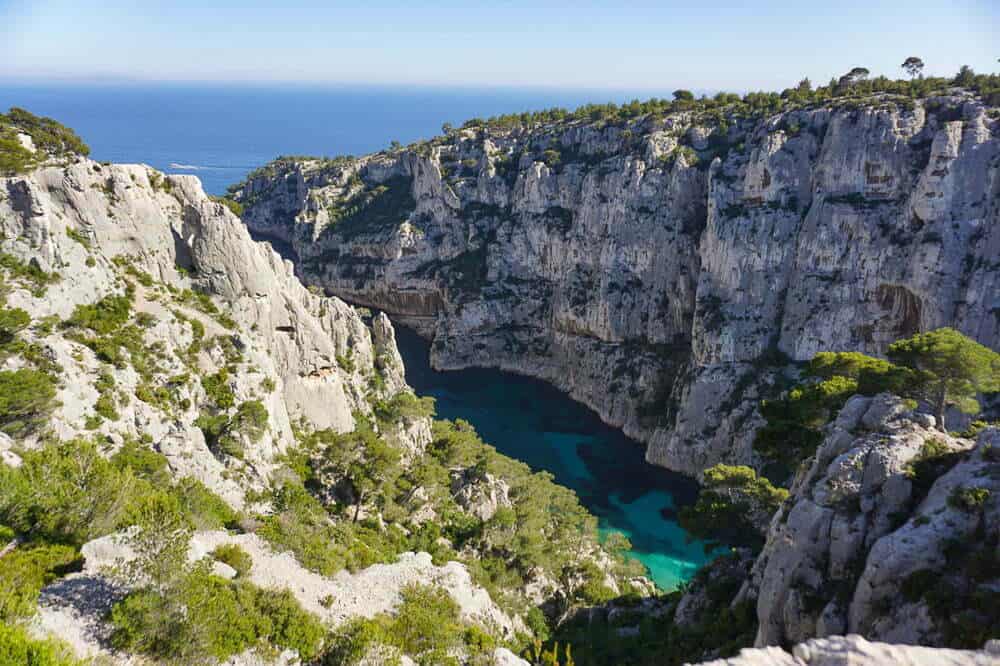
Cinque Terre National Park
One of the most spectacular pieces of Italian coastline is the Cinque Terre National Park. It was Italy’s first national park – protected from 1999 – and it is also Italy’s smallest (only 4300 acres). But although it is the smallest national park in Italy, it has the biggest population of all Italian national parks. That’s because it contains the five UNESCO World Heritage listed villages of Cinque Terre: Vernazza, Monterosso al Mare, Riomaggiore, Corniglia, and Manarola.
The spectacular coastline of Liguria in northern Italy is punctuated with these riotously colored small villages that perch on rocky outcrops and in picturesque small harbors. Above them is a hiking trail connecting the villages that winds through olive groves, wineries, fruit trees and medieval fortifications. Parts of the communes of La Spezia and Levanto are also included in the National Park.
It’s not possible to drive into the villages – the best way to get there is by train – a railway winds along the coastline. Spezia Centrale is the main hub for trains to Cinque Terre. Entrance to Cinque Terre National Park is free making it one of the best (and most cost effective) national parks in Europe.
Contributed by Monique from Trip Anthropologist
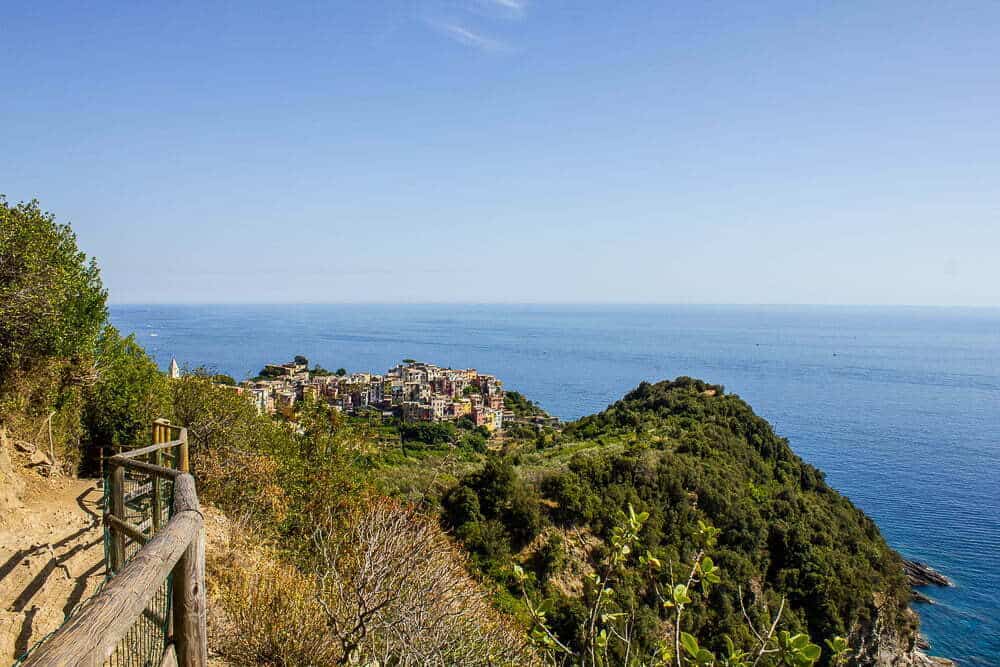
De Hoge Veluwe, The Netherlands
National Park De Hoge Veluwe is a park which covers part of the Veluwe in The Netherlands. It has forests, heathlands, sand drifts and grass plains.
Unique about the park is that it combines art and nature. Throughout the park you can bump into art sculptures or buildings. Next to that the Kröller-Müller museum is located in the park, which has the second largest Van Gogh collection in the world.
Another special thing about national park De Hoge Veluwe are the white bikes. At every entrance and at the restaurant in the park are white bikes available for free. Everyone can use them to explore the park on a bike.
Spot the big four in the forests, on the heathlands or on the grass plains. The big four consist of red deer, mouflon, deer and wild boar. The park organises safaris throughout the year.
There are 3 entrances to the park: Otterlo, Hoenderloo and Schaarsbergen. You can reach the park on public transport, on bike or by car. Entrance is €10.95 for 13 and up, and €5.50 for kids 6 till 12. Parking costs €3.90.
Contributed by Cosette from KarsTravels

Donana National Park, Spain
Located in the region of Andalusia in Southern Spain, Donana National Park is an iconic scenery of flora and fauna. It is known as Europe’s most important and beautiful wetland. Travelers can experience the diversity of ecosystems on the visit including marshland, pine groves, lagoons, Aloe Vera, cliffs, moving dunes, and 30 kilometers of unspoiled white beaches. The natural park is a natural spectacle that shows different sides each season.
Travelers can find the easiest path to reach the northern part of the park by entering from the José Antonio Valverde visitors center. The entry center is about 30 kilometers south of the town of Villamanrique da le Confess. Travelers just need to book their entry tickets in advance to confirm the booking. On average, the park costs $81 for two adults. However, the cancellation needs to be done 24 hours in advance for a full refund.
There is a lot to explore in this jewel of Andalusia that includes riding horses along the beach to watching flamingos in the Marshlands. Having the popular Spanish garlic soup after swimming in the Atlantic Ocean can be the perfect end to the evening in one of the best national parks in Europe.
Contributed by Paulina from Paulina On The Road
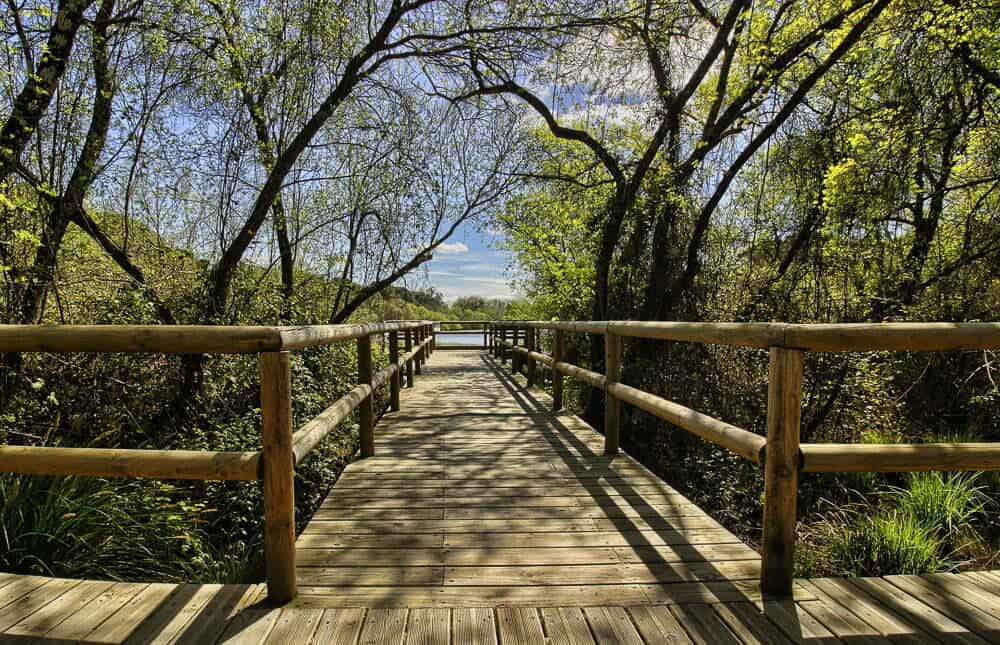
Jotunheimen National Park, Norway
Jotunheimen National Park features some of the best nature Norway has to offer with mighty mountains, calm lakes, rivers and fjords. The National Park is one of the most popular hiking destinations among Norwegians hosting challenging day trips and incredible multi day treks. Some of the best hikes in Norway are found in this park, like the Besseggen Ridge hike and the highest peak in Northern Europe, Galdhøpiggen (2469masl).
Other than hiking, there are a lot of other exciting activities that can be done. Trail running, biking, and kayaking to mention a few. There are also opportunities to go river rafting, abseiling and climbing for the more adventurous. Nature in Norway is free, and so goes for the national parks. There are quite a few entry points and a good town to stay is Lom, where you have access to Galdhøpiggen but also Glitterheim which is another challenging yet highly rewarding hike. The best way to get around the park is by car, though there are some bus services to the most visited attractions, making this one of the most accessible as well as one of the best National Parks in Europe.
Contributed by Linn from Brainy Backpackers

Killarney National Park, Ireland
One of Europe’s best national parks is Killarney National Park in Ireland. One of the best national parks in Ireland, Killarney was the first one created in Ireland when the Muckross Estate was handed over to the Irish Free State in the 1930’s.
Comprising Ireland’s tallest mountain range the MacGillycuddy Reeks, waterfalls, lakes and beautiful landscape, Killarney National Park is a must-visit due to the sheer beauty of the park. It is free to enter and the town of Killarney sits on the edge of the park, making it a great base for exploring the national park. The park is also home to many animals and birds including Ireland’s only wild herd of red deer.
Within the park there are lots of things to see and do besides enjoying the landscape. Muckross House and Abbey are both notable places to visit as is the Muckross Traditional Farms. One of Ireland’s most beautiful waterfalls, the Torc Waterfall is also found in this Irish national park. The park is also contained within the Ring of Kerry, a circular driving route in the southwest corner of Ireland that makes for an amazing road trip around one of the best National Parks in Europe.
Contributed by Cath from Travel Around Ireland

The Lake District National Park, United Kingdom
The Lake District is one of the UK’s most spectacular National Parks. Situated in Cumbria, in the north west of England the park is scattered with beautiful lakes and waterways and with a mountain backdrop it really is a spectacular place to visit. There are no costs to get in but a car is almost essential to get to it properly – although once there a boat trip through some of its beautiful lakes is a wonderful way to take the sights in.
In 2017 it became a UNESCO World Heritage Site and it is packed with outdoor pursuits from canoeing to mountain biking. The landscape is so evocative that it doesn’t matter what the weather is doing, this is somewhere that is calling out to be explored as one of the best national parks in Europe.
The Lake District was also home to Beatrix Potter and there are a number of walks through the park to see some of her most loved spots as well as her house, owned by the National Trust now and a real insight into her life. There are a number of fantastic Lake District family hotels dotted through the park so it’s easy to make a weekend or longer of a trip here.
Contributed by Nichola from Global Mouse Travel

Loonse en Drunense Duinen, The Netherlands
The Loonse en Drunense Duinen National Park in the Netherlands is one of the largest sand-drifting areas in Europe. Through overgrazing and peat extraction in the Middle Ages, the area got desolate and the exposed sand plains allowed for the sand to drift. Even two villages got buried under the sands. Today, the sand dunes are still alive and moving around. Beside the unusual landscape, this National park has also unique flora and fauna. Actually, it’s a kind of a desert in the middle of the Netherlands and the locals call it the Brabant Sahara, as it is located in the province of North Brabant. The unique landscape makes this one of the most interesting and best national parks in Europe.
The access to the Loonse en Drunense Duinen National Park is free but you are not allowed to enter the park between sunset and sunrise. There are 5 entry points to the park where you can get refreshments and have a bite. There are various trails in the park, but you can just walk around as you please. You can also rent a bike at one of the entry points and explore the Dunes at a quicker pace.
The best way to reach the park is by car. You can park at one of the entry points, as cars are not allowed in the park. If you rely on public transportation, you need to get to one of the nearby towns – Waalwijk, Loon op Zand or Drunen, from where you can reach the national park. The Loonse en Drunense Duinen National Park is amidst a popular recreational area where the locals love to spend their summer holidays.
Contributed by Daniela from Exploring the Netherlands
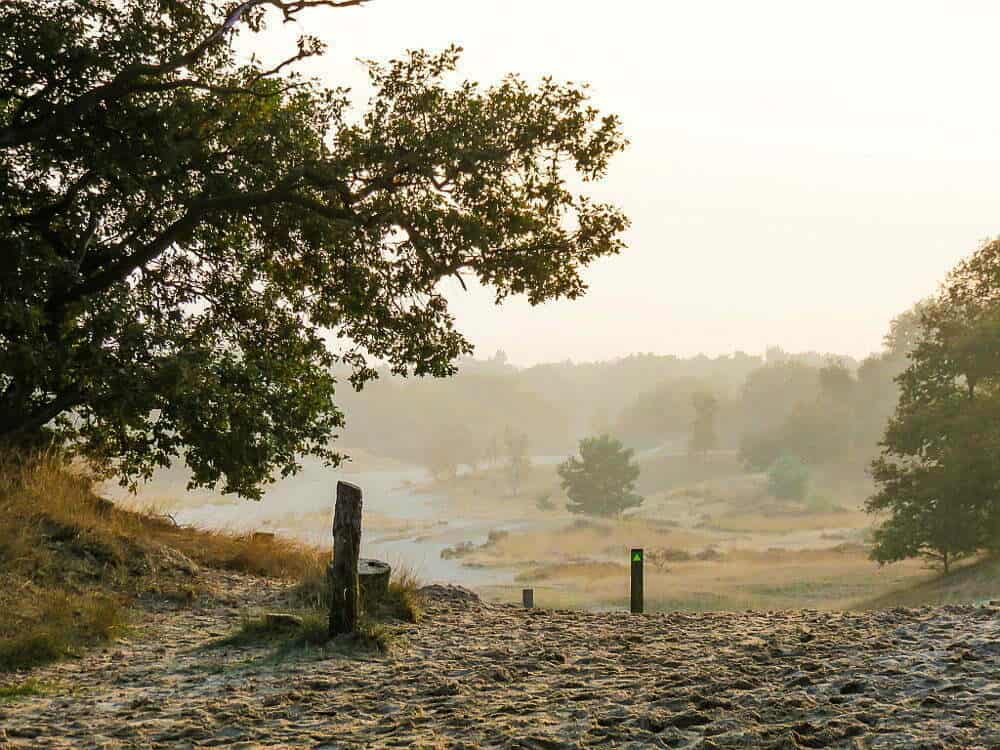
Peak District National Park, United Kingdom
The Peak District, nestled between the big cities of Manchester, Sheffield, and Derby, is the oldest National Park in the UK, and the best way to explore it is by hiking it’s green rolling hills and dramatic escarpments armed with an Ordnance Survey Map.
Whilst Mam Tor in the North, or Dovedale Stepping Stones in the South, are popular hiking destinations, perhaps head to Curbar Edge or the rolling hills around Monyash, which will be much quieter. And a visit to the grand Chatworth Estate is a must. Wander the grounds for free, pop in to the house to marvel at the history, or perhaps go wild swimming in the Derwent River!
Alternatively, hire a bike and cycle along the miles upon miles of disused railway tracks that criss-cross the National Park. These have been transformed into gravel paths that are entirely traffic free. The Monsal Trail or High Peak Trail are our favourite Peak District cycle routes.
Then reward your efforts with a pint of Peak Ale and a home-cooked roast dinner in one of the many characterful old pubs dotted across the National Park. Don’t worry about getting changed, muddy boots (and paws!) are always welcome.
As with all National Parks in the UK, there is no entry fee and the Park is open to all. Public transport is very limited, and a car is advisable to get the most out of your visit.
Contributed by Jenny from Peak District Kids

Peneda Geres National Park, Portugal
Peneda-Gerês National Park is located in Northern Portugal near to the Spanish border. Aside from the stunning natural landscape, at Portugal’s only national park you can also discover a myriad of biodiversity, bird watching, swimming, architecture, heritage, and walking trails.
The abundance of flora and fauna in this region is one of the prominent features of this protected area in Northern Portugal. That, coupled with the variations in altitude and the sweeping vistas, make Peneda-Gerês one of the best national parks in Europe to visit.
If you’re lucky, you may be able to catch a glimpse of an eagle or wolf, or even the elusive Pyrenean desman!
It is possible to visit independently or with a tour. Oporto Adventure Tours offers a perfect day trip from beautiful Porto, complete with lunch in a traditional village and opportunities to swim in the idyllic lagoons. A portion of ticket proceeds also aids in the reforestation efforts in the area!
Contributed by Jade from The Migrant Yogi

Picos de Europa National Park, Spain
Spreading across the regions of Asturias, Cantabria, and Castilla y Leon, the Picos de Europa National Park has to be one of the most beautiful places to visit in northern Spain. Accessible by car and free to visit, it is Spain’s only inhabited nature reserve, so you can explore the stunning natural scenery by day and stay in the most charming rural accommodations at night.
With countless mountains, lakes, gorges, viewpoints, and unique flora and fauna, this is a perfect place to enjoy the most scenic views and engage yourself in some outdoor activities like hiking, canyoning, and wildlife-watching. The charming little hamlets you see while exploring the park will probably also steal your heart.
There are dozens of things to do and see in Picos de Europa, but a few highlights include the gorgeous Covadonga Lakes and Sanctuary, the Cares Trail, the Naranjo de Bulnes viewpoint, and the Fuente Dé cable car.
If you want to experience this underrated side of Spain and visit one of the most beautiful national parks in Europe, Picos de Europa is the ideal place to do so.
Contributed by Or from My Path in the World

Plitvice Lakes National Park, Croatia
The perfect blend of lakes, waterfalls and nature- Plitvice in Croatia are known as one of the most beautiful waterfalls. Amazing turqouise colours that you cannot believe are real make Plitvice an indispensable part of every visit to Croatia and undoubtedly one of the best National Parks in Europe.
It’s easily reachable on your own with the car or bus or simply by taking a tour. Village Plitvice is located between Zagreb and Zadar at the seaside. The entrance fee is the highest in the summer period but don’t hesitate to visit it during fall or winter- Plitvice lakes are always amazing. Enchanting autumn colours make the place even more special, during one week in october you can even enjoy the promotional price. Boat ride is included in the entrance fee.
The whole tour of the lakes takes 6 hours which makes the perfect day trip. The enjoyable walk of 22 km through this nature wonder makes it a unique and fabulous experience. Who doesn’t like waterfalls and here- you can see it in all its shine and beauty. If that’s not enough, visit Rastoke one hour away with its splendid waterfalls.
Contributed by Gabi from Under Flowery Sky

Sierra Nevada National Park, Spain
Sierra Nevada National Park is home to some of the highest peaks in Spain, like Mulhacen (3479m) and Pico de Veleta (3398m). In the winter months you can enjoy the southernmost ski resort in Europe and in the summer months it’s home to hiking enthusiasts heading out on anything from one day hikes to multi day treks. There are a number of refuges to stay at, some are free but are pretty much just empty stone huts, while others cost money and have staff and facilities available, including restaurant and bar.
It’s free to enter the national park but there are strict rules to respect nature and only practice ethical activities. Sierra Nevada National Park is mainly covering the Province of Granada but extends over to both Malaga and Almería too. It’s accessible by car and bus from most cities and villages around the park. If you want to mix nature with culture, stay in Granada. Otherwise, you could go for a more rural experience in the village of Capileira or Monachil.
Contributed by Linn from Andalucia Hiking
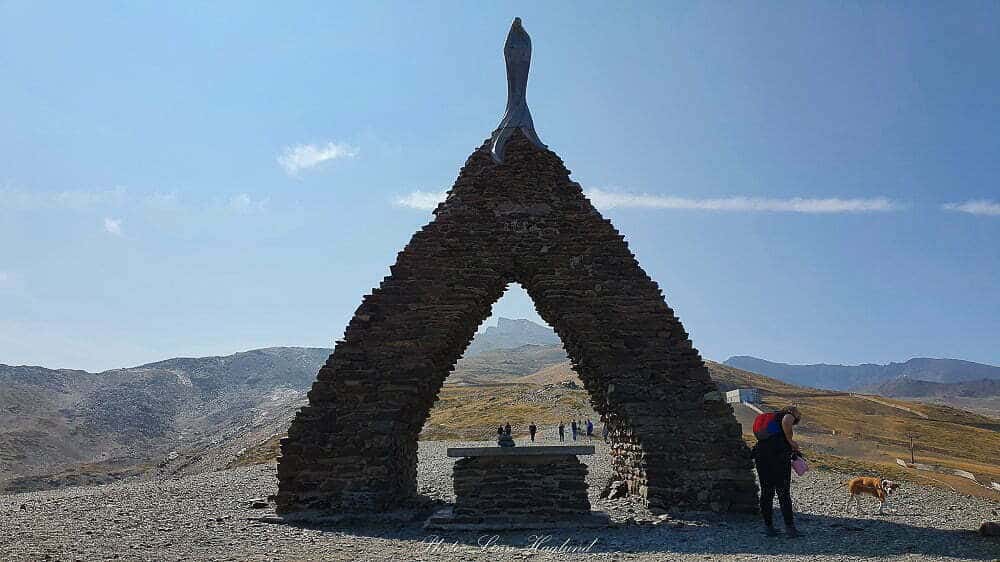
Thingvellir National Park, Iceland
Thingvellir National Park is located in the south west of Iceland. It is just 50 kilometres east of Reykjavík and became the first national park in Iceland in 1930. The park is located on the fissure of the Mid-Atlantic Ridge and is one of the few places where the fault between the continents can be seen above sea level. In 2004 it was recognised as a UNESCO world Heritage ste.
The area has been at the heart of Icelandic history and is where the first national assembly convened in 900AD. Since then it has been at the heart of the Icelandic nation. Today you can walk along the fault line and dive at Silfra where it is possible to touch the North American and Eurasian tectonic plates at the same time.
The park is an easy drive from Reyjkavík and all of the Golden Circle tours will visit the National Park. There is a large parking area which does require payment at a meter but it is free to explore the park itself. There is also a small museum which has an entry charge.
Contributed by Suzanne from Meandering Wild

Triglav National Park, Slovenia
Triglav National Park is Slovenia’s most popular natural landscape, with bubbling rivers, towering peaks and the deep forests of the stunning Julian Alps to be explored. It’s a great place for hiking and biking with trails snaking up hidden valleys, and those looking for a bit of adventure can have a go at canoeing or rafting down the emerald Soca River or sailing on Lake Bohinj.
It’s really easy to visit Triglav National Park, as it’s just a short car journey from the famous tourist town of Bled. If you’re coming straight from the capital Ljubljana, it takes around two hours to reach Triglav. Once inside the park boundaries your scenic drive will take you past the turquoise pool of Lake Jasna, before winding up the precipitous Vrsic Pass and into the heart of the wilderness. There are plenty of places to stop along the way for photographs, walks and picnics, and if you want to stay overnight choose from a wide range of mountain huts, guest chalets and hotels throughout the park. There’s no entry fee for Triglav, making this an affordable way to discover Slovenia.
Contributed by Heather at Conversant Traveller
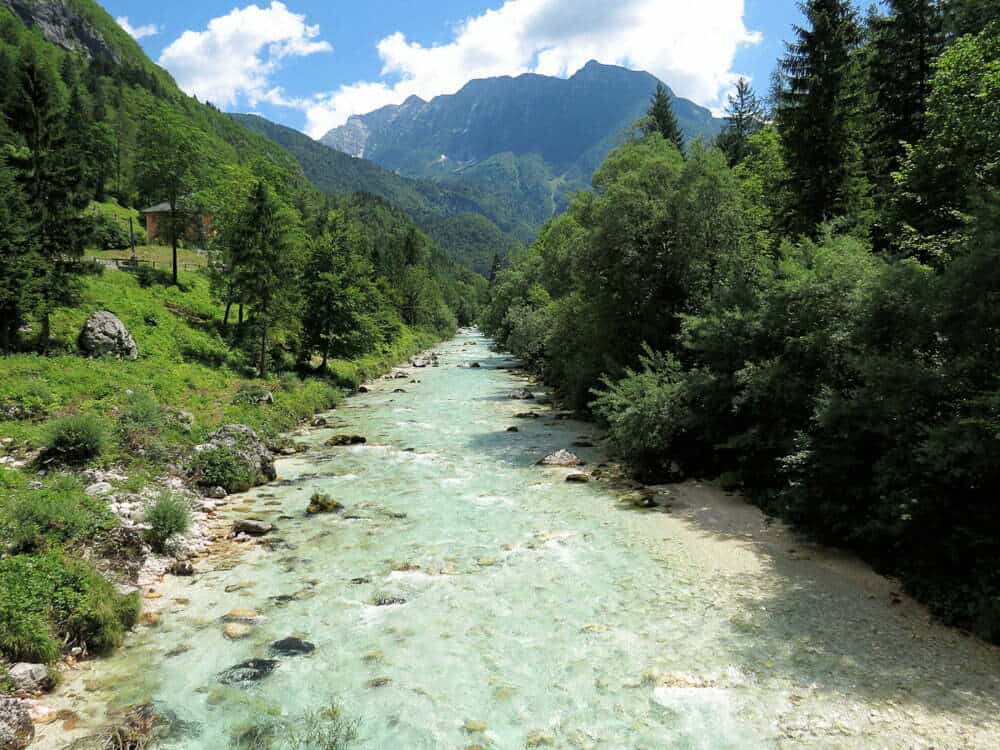
Wickow Mountains National Park, Ireland
Ireland is heaven for nature lovers, with its rough, green, beautiful terrain travelers can find beauty in every corner. If you are visiting Dublin, one of the most scenic and easily accessible national parks is the Wicklow Mountains National Park.
The Wicklow Mountains is the only national park in the east of Ireland and with a total area of 20,483 ha, it is also the largest Irish National Park. As the name already suggests, it’s a mountain landscape, with windy roads, and scenic forests, heath and bogland wildflowers, lakes, and waterfalls.
Entry to the park is completely free. However, you do need a car to get there and to get around. Alternatively, you could take tours from Dublin that take to some of the major highlights, such as The Glendalough Valley, Lough Tay which is also known as Lake Guinness (seriously, this lake is as black as your Guinness), and the romantic bridge from the P.S. I Love You movie. These tours generally cost around 30 euros per person.
Whether you decide to explore the Wicklow Mountains on your own or with a tour, driving through this beautiful park will provide you with amazing views either way.
Contributed by Lara from The Best Travel Gifts

Yorkshire Moors National Park, United Kingdom
Covering hundreds of square miles, the North York Moors is a vast area in the north east of England with three different types of geography – purple and brown shrubs, green pastures and woodlands. The traditional primary means of earning a living in this area was farming of sheep and cattle. Farmers have the right to let their sheep freely roam the Moors so you do have to be careful of them when you are driving.
There are farms and towns in the North York Moors, for example, Goathland which is now famous for having been the stand-in for Hogsmeade in the Harry Potter films. Another cool place to visit besides the North York Moors is Eden Camp which is a former POW camp housing captured Italian and German soldiers during World War 2. There was little chance of the captured soldiers running away because you really couldn’t get more in the middle of nowhere than the North York Moors! Other popular tourist sites include Rievualx Abbey, a ruined Cistercian Abbey considered one of the most picturesque in England. Dalby Forest is a popular visitor attraction for families because it has a ropes course as well as its own walks or cycle trails.
In addition to tourist sites, by far the most popular activity is walking the North York Moors.You can even walk a portion of an old Roman Road which runs about a mile. There’s no cost to do these walks. Just drop your car off at one of the two North York Moors visitors Centres, pick up any information you need for your route and set off on an adventure. There is about 1400 miles of walking paths. It’s relatively easy hill walking which gives you panoramic vistas of the countryside. The best thing about walking in England is that you can end your walk at a village or a town like Malton or Pickering which will have a pub for a drink and a snack!
Contributed by Shobha from Epic England Travel

Like this post on the best national parks in Europe?
Pin to save it for later!
